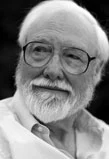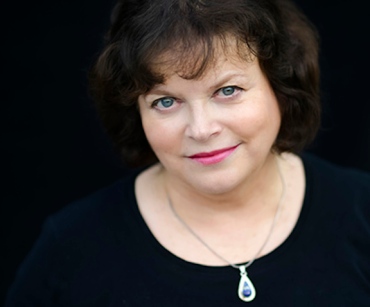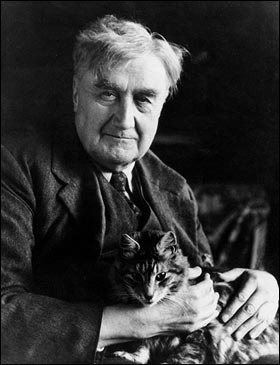The Well-Tempered Ear
Classical music: The UW Choral Union and UW Symphony Orchestra, with guest soloists, offered a welcome trio of rarely heard works.
1 Comment
By Jacob Stockinger
Here is a special posting, a review written by frequent guest critic and writer for this blog, John W. Barker. Barker (below) is an emeritus professor of Medieval history at the University of Wisconsin-Madison. He also is a well-known classical music critic who writes for Isthmus and the American Record Guide, and who for 20 years hosted an early music show every other Sunday morning on WORT-FM 89.9 FM. He serves on the Board of Advisors for the Madison Early Music Festival and frequently gives pre-concert lectures in Madison.
By John W. Barker
Well, last weekend was another train-wreck weekend with too many good things in competition with each other: pianist Valentina Lisitsa at the Wisconsin Union Theater (Thursday, Nov. 20), the Madison Opera’s Fidelio at the Overture Center (Friday, Nov. 21, and Sunday, Nov. 23), the UW-Madison Choral Union and Symphony Orchestra (Saturday, Nov. 22, and Sunday, Nov. 23), and the intimate Solo Dei Gloria concert at Luther Memorial Church (Saturday, Nov. 22). I won’t mention the basketball game, as well.
I was able to revel in Beethoven’s Fidelio on Friday evening, enjoy the SDGers on Saturday, and catch the UW Choral Union and UW Symphony Orchestra (below) on Sunday evening. And a rewarding finale that was.
Conductor and director Beverly Taylor (below) wisely avoided any seasonal associations and gave us the chance to hear music that we are rarely likely to hear otherwise.
There were three pieces.
The “filler” in the middle was a lushly exotic curiosity by Ralph Vaughan Williams (below), his Flos campi (or “floss campy,” as a Wisconsin Public Radio announcer identified it) — “Flower of the Field,” inspired by lines from the Biblical Song of Songs, and scored for the unusual combination of solo viola, wordless chorus and orchestra.
It is a rhapsodic affair, in six interconnected sections, exploring the sonorities and novel colors that his scoring allows. While it evokes a perfumed “eastern” ambiance, much of its musical character really derives from the composer’s steeping in folksong and folk spirit.
The chorus’s size gave its sound a good carrying power, helping the wordless ah-ing and humming to come through well against the orchestra, while viola soloist Sally Chisholm (below), a UW-Madison professor who also plays in the Pro Arte Quartet, made a beautifully ecstatic web of sound that only the viola can really achieve. When have you last heard such a dreamy novelty, and when again are you likely to?
On other side of that music came two different settings of the familiar Latin canticle, Te Deum laudamus, by two different composers. This all-purpose liturgical text has been set many, many times by a procession of composers over the centuries, but it would be difficult to imagine two more utterly contrasting treatments than the ones we heard.
The better known (or less unknown) one of the two was that by opera composer Giuseppe Verdi (below), among his very last compositions and now reckoned as the fourth of his Quattro pezzi sacri or “Four Sacred Pieces.”
It is in a style familiar from his only other important setting of Latin liturgical texts, his Requiem. It is straightforward but noble, monumental and powerful music, and it was brought off with eloquence. (You can heard it, accompanied by the art of Michelangelo in a YouTube video at the bottom.)
That was the closing work.
The opening one was the other Te Deum. Antonin Dvorák (below), though a devout Roman Catholic, composed very little sacred music in Latin. Setting aside a purely functional Mass setting, his only familiar and recognized examples are his Stabat mater and his Requiem. Both of those are deeply felt, but are grandiose concert works.
The only other such work is his setting of the Te Deum, cruelly neglected and unappreciated. It was composed in 1892 as a debut work for Dvorák’s new residence in New York City, and was intended as a celebration of the 400th anniversary of Christopher Columbus’ discovery of the New World.
Against Verdi’s solemnity, Dvorák’s setting is festive. It is patterned along the lines of the traditional four-movement symphony, with a “slow movement” of folksong-like lyricism and a passionate “scherzo,” framed by flanking outpourings of extraordinary exuberance — all in unbroken succession.
For anyone who loves the music of this composer — as I do — or who is still discovering it, this work is an exciting revelation.
There were solo passages in the two Te Deums, beautifully sung by undergraduate soprano Emi Chen (below right) and graduate student baritone Joel Rathmann (below left).
The UW Choral Union itself, 123 singers strong, sang with appropriate sonority. There were some rough spots in the opening of the Dvorák, with its off-putting rhythmic eccentricities, but the UW Symphony Orchestra played quite well otherwise — even if it sometimes was allowed to overshadow the other participants.
In sum, this proved an evening of truly refreshing choral experience, and another tribute to Beverly Taylor’s enterprise.
Tags: American Record Guide, Arts, baritone, Beethoven, Bible, choral music, chorus, Christopher Columbus, Classical music, Dvorak, Flos campi, Jacob Stockinger, Madison, Madison Symphony Orchestra, mass, Music, New World, opera, Orchestra, Pro Arte Quartet, Ralph Vaughan Williams, Requiem, Roman Catholic, Song of Songs, soprano, Stabat Mater, symphony, University of Wisconsin-Madison School of Music, University of Wisconsin–Madison, UW Choral Union, UW Symphony Orchestra, Verdi, Wisconsin, wisconsin public radio, YouTube
- May 2024
- April 2024
- March 2024
- February 2024
- January 2024
- December 2023
- November 2023
- October 2023
- September 2023
- August 2023
- July 2023
- June 2023
- May 2023
- April 2023
- March 2023
- February 2023
- January 2023
- December 2022
- October 2022
- September 2022
- June 2022
- May 2022
- April 2022
- March 2022
- July 2021
- June 2021
- May 2021
- April 2021
- March 2021
- February 2021
- January 2021
- December 2020
- November 2020
- October 2020
- September 2020
- August 2020
- July 2020
- June 2020
- May 2020
- April 2020
- March 2020
- February 2020
- January 2020
- December 2019
- November 2019
- October 2019
- September 2019
- August 2019
- July 2019
- June 2019
- May 2019
- April 2019
- March 2019
- February 2019
- January 2019
- December 2018
- November 2018
- October 2018
- September 2018
- August 2018
- July 2018
- June 2018
- May 2018
- April 2018
- March 2018
- February 2018
- January 2018
- December 2017
- November 2017
- October 2017
- September 2017
- August 2017
- July 2017
- June 2017
- May 2017
- April 2017
- March 2017
- February 2017
- January 2017
- December 2016
- November 2016
- October 2016
- September 2016
- August 2016
- July 2016
- June 2016
- May 2016
- April 2016
- March 2016
- February 2016
- January 2016
- December 2015
- November 2015
- October 2015
- September 2015
- August 2015
- July 2015
- June 2015
- May 2015
- April 2015
- March 2015
- February 2015
- January 2015
- December 2014
- November 2014
- October 2014
- September 2014
- August 2014
- July 2014
- June 2014
- May 2014
- April 2014
- March 2014
- February 2014
- January 2014
- December 2013
- November 2013
- October 2013
- September 2013
- August 2013
- July 2013
- June 2013
- May 2013
- April 2013
- March 2013
- February 2013
- January 2013
- December 2012
- November 2012
- October 2012
- September 2012
- August 2012
- July 2012
- June 2012
- May 2012
- April 2012
- March 2012
- February 2012
- January 2012
- December 2011
- November 2011
- October 2011
- September 2011
- August 2011
- July 2011
- June 2011
- May 2011
- April 2011
- March 2011
- February 2011
- January 2011
- December 2010
- November 2010
- October 2010
- September 2010
- August 2010
- July 2010
- June 2010
- May 2010
- April 2010
- March 2010
- February 2010
- January 2010
- December 2009
- November 2009
- October 2009
- September 2009
- August 2009
Archives
- 2,491,650 hits
Blog Stats
Recent Comments
| MARTIN LUTHER LUTE |… on Classical music: Who was the e… | |
| Brian Jefferies on Classical music: A major reass… | |
| welltemperedear on What made Beethoven sick and… | |
| rlhess5d5b7e5dff on What made Beethoven sick and… | |
| welltemperedear on Beethoven’s Ninth turns 200… |
Tags
#BlogPost #BlogPosting #ChamberMusic #FacebookPost #FacebookPosting #MeadWitterSchoolofMusic #TheEar #UniversityofWisconsin-Madison #YouTubevideo Arts audience Bach Baroque Beethoven blog Cello Chamber music choral music Classical music Compact Disc composer Concert concerto conductor Early music Facebook forward Franz Schubert George Frideric Handel Jacob Stockinger Johannes Brahms Johann Sebastian Bach John DeMain like link Ludwig van Beethoven Madison Madison Opera Madison Symphony Orchestra Mead Witter School of Music Mozart Music New Music New York City NPR opera Orchestra Overture Center performer Pianist Piano post posting program share singer Sonata song soprano String quartet Student symphony tag The Ear United States University of Wisconsin-Madison School of Music University of Wisconsin–Madison Viola Violin vocal music Wisconsin Wisconsin Chamber Orchestra wisconsin public radio Wolfgang Amadeus Mozart YouTube






